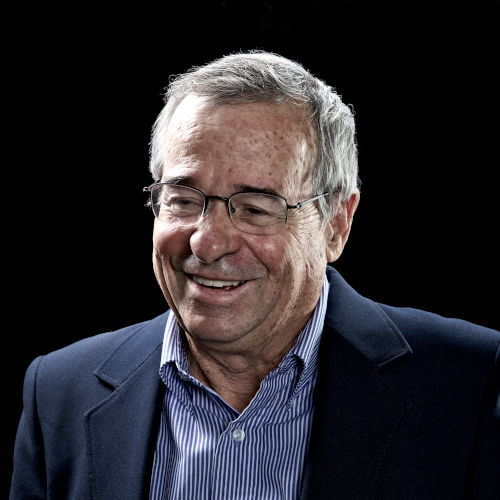Nobel-winning chemistry professor publishes book

In the manner of a true educator, two and a half years ago, Arieh Warshel decided he wanted to put out an instructive story. He published his book, “From Kibbutz Fishponds to The Nobel Prize: Taking Molecular Functions Into Cyberspace,” on Oct. 28 of last year.
In the book, Warshel, a professor of chemistry and biochemistry and 2013 Nobel Prize awardee for chemistry, recounts his childhood and adolescence in Israel. He grew up in a kibbutz, a way of communal life where everyone worked for everyone as part of the community. Life in the kibbutz did not emphasize learning in an academic setting, Warshel said, as there was no direct pass to a university, and children sometimes didn’t work at the same location. Warshel worked in the fish ponds.
“You’ll have to try to get the fish out and collect them … You fill the big pond much, much bigger than the USC swimming pool. You’ll fill it with very small carps, then they grow up after a year or two and then you take out the water,” Warshel said. “Then you come with [a] big net, and it’s very hard work, and [you] try to swallow the carps to big containers and then to a big tank.”
Warshel joined the Israeli army in 1958 and, later, attended the Technion-Israel Institute of Technology for his bachelor’s degree. In 1969, he attended the Weizmann Institute of Science for his doctorate degree. Warshel said he wanted to attend university because it was rare in his community.
“The [people on the kibbutz] did not want you to go to university because they needed you to continue working in the kibbutz,” Warshel said. “But I was among the few people who studied relatively hard [for the examination]. Very few people went to the examination [so they could continue their studies].”
Warshel originally had no idea what academic direction he wanted to go into, but while at university, he began to do experiments and found his interest to lie in biology and studying enzymes.
“When I started my PhD, I moved to a direction where we tried to use computers to study molecules and somehow this led to the understanding that you could use computers to model large molecules and proteins,” Warshel said. “And during the year, I started to realize that it is a very powerful approach.”
Warshel began his research in Israel and England before coming to USC in 1976. Arriving at USC to teach chemistry, Warshal now continues his research in computational chemistry.
Shina Caroline Lynn Kamerlin, a professor of structural biology at Uppsala University in Sweden, was a postdoctoral student under Warshel from 2007 to 2010 and said that he was the best principal investigator.
“He’s just a great scientist,” Kamerlin said. “He’s really smart and stubborn and determined to kind of make things figure things out.”
Anna Krylov, a professor of chemistry at USC and Warshel’s colleague, would describe him as insightful.
“When you talk to him about any problem, he will see some very important aspects of it, and sometimes, it will surprise you. He has this unexpected way of seeing things, so he has a kind of nonorthodox view on chemistry,” Krylov said. “You would tell him about a chemical problem and then he will see something about it that didn’t occur to you.”
Kamerlin first heard about the book when his assistant reached out to her asking to write the front cover blurb.
“I read the book during the summer and it was really good … And also what’s really nice is that he shares a huge amount of family photos when he’s very little all the way through,” Kamerlin said. “By the time I joined the [research] group, he was already in his mid 60s, so I’ve never met him as a young man. Seeing what he looks like as a kid and growing up, it’s always good to remember that everyone was young at some point in time.”
The book is targeted toward scientists interested in a biography and those hoping to progress science, Warshel said.
“The second half of the book talks in larger part on the scientific issues on how I solve different problems like designing drugs, understanding how vision works, how photosynthesis works in different fields and how to use computers and intuition,” Warshel said. “It is a combination of a personal biography and the emergence of computer simulations of biological molecules.”
While Warshel’s book shares his personal biography, it also illustrates parts of his character. Kamerlin and Krylov both described Warshal as a humorous person and this was shown throughout the book.
“He might not necessarily like to perceive himself as funny, but I think he’s got a great sense of humor,” Kamerlin said. “That’s also the fun thing with reading the book because he’s got this sort of dry, very random sense of humor that I really appreciate.”
After his book’s publication, Warshel continued to perform coronavirus-related research and publish papers on his discoveries. He published a paper Jan. 13 titled “Effect of Environmental Factors on the Catalytic Activity of Intramembrane Serine Protease.”
“I keep attacking scientific puzzles and problems all the time,” Warshel said. “At present, I am not trying to write another book, but maybe if Hollywood will call me to do a movie I will try.”
A previous version of this article wrote that Shina Caroline Lynn Kamerlin was a doctoral student under Warshel. Kamerlin was a postdoctoral student under Warshel. The Daily Trojan regrets this error.

